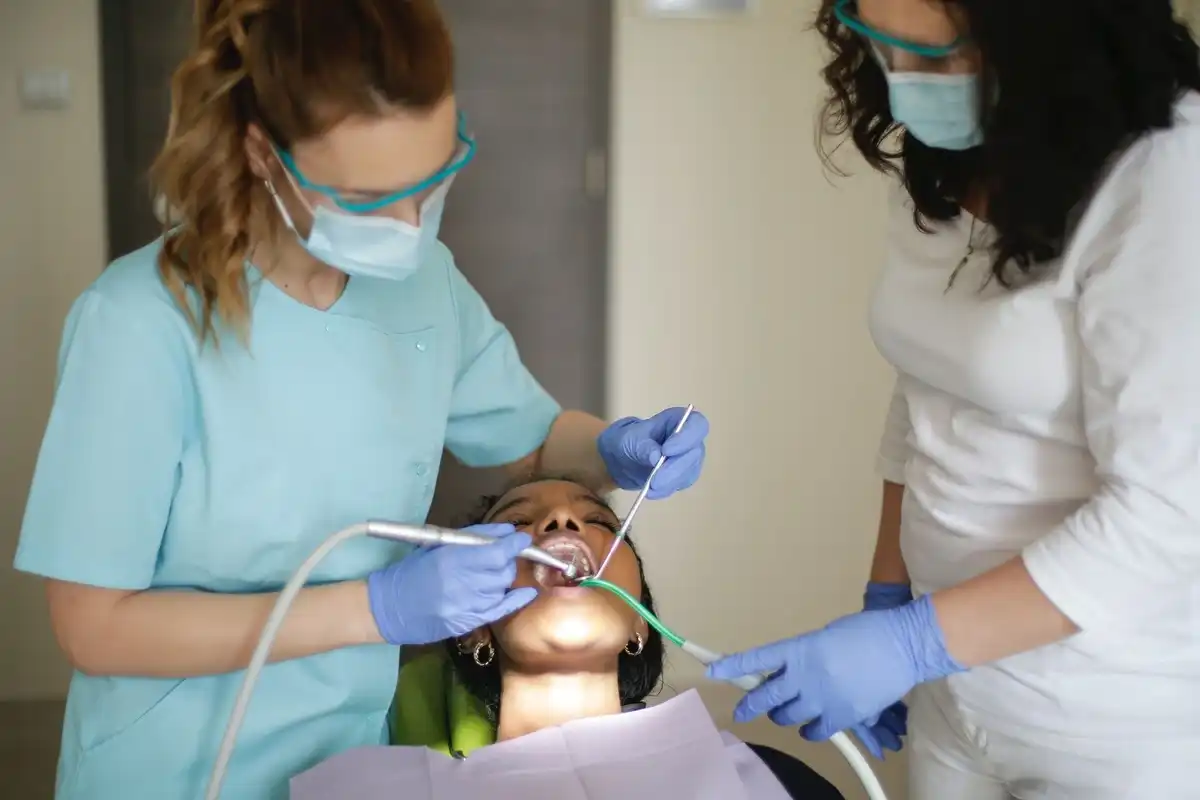Deep Cleaning vs Regular Cleaning | Which is Better?


Did your dentist just tell you that you need a deep cleaning?
A deep cleaning — or “SRP” — isn’t just a heavy-duty or “better” cleaning that you get every once in a while; it’s a special type of preventative procedure that’s used if you’re exhibiting signs of bone loss and tartar buildup.
What Is A Deep Cleaning (SRP)?
Scaling and Root Planing (aka SRP, SCRP, or deep cleaning for teeth) is a non-surgical cleaning that targets areas of your mouth with heavy tartar buildup under the gums.
A deep cleaning is more rigorous than your regular preventative cleaning that’s scheduled every six months. Instead, it’s more of a heavy-duty lavage where your dentist cleans out areas that are starting to show signs of gum disease.
To know whether you need an SRP, your dentist has to measure your bone levels with a probe and check your X-rays for sub-gingival (aka “Sub-G”) tartar.
Is A Deep Cleaning Right For You?
When it comes to deep cleaning vs regular cleaning, you might need neither!
Regular Cleanings
As long as you have healthy pockets under 3mm deep and no heavy tartar buildup, you qualify for a regular cleaning.
Also known as a “prophylaxis” with your hygienist, these preventative cleanings are aimed at helping you keep your mouth healthy, prevent tartar buildup, and reduce your risk of bone loss.
Localized SRP (The Middle Man)
Let’s say you’re on the fence, with just a few pockets that are 5mm or deeper and only a couple of areas with Sub-G tartar. In this case, you probably don’t need a full-mouth SRP. Instead, a localized SRP targets the area where you’re starting to get bone loss and buildup, while the other parts of your mouth get a regular cleaning.
Localized deep cleanings for teeth are always planned on a case-by-case basis. If your mouth is “on the fence” so to speak, you need a dentist that you can trust to make the right call.
SRP (Deep Cleaning For Teeth)
If you have several higher number pockets with tartar under your gums, then you qualify for a deep cleaning. At most dentists’ offices, they usually break this up into two separate appointments, numbing one side of your mouth at a time. You don’t want to have your entire mouth numbed at once!
Perio Charting
About once a year, your dentist or hygienist will measure the natural space that’s between your gums and teeth. The bottom of these “pockets” reflects how high your bone is.
A healthy pocket is anywhere between1-3mm deep. If you have pockets 5mm or deeper, you’ll probably benefit from a deep cleaning (since bone loss is the leading cause of tooth loss!)
Dental X-Rays
Measuring your gums only says so much. To truly determine if you need a deep cleaning for teeth, your dentist also needs to take regular checkup X-rays about once per year.
Your bitewing X-rays show the spaces between your teeth and under the gums…and in this case, if there’s any heavy tartar buildup. Without X-rays, a deep cleaning for teeth is just based off of guesswork. Your dentist needs them to understand what’s going on with your entire smile. To find out if you need a deep cleaning, you have to have bitewing X-rays and a probing chart completed. Once you and your dentist have all of the necessary data, you can determine which type of cleaning best benefits your situation.
During your visit, your dentist will show you your X-rays and explain where bone levels are, how much tartar buildup there is, and if you’re past the point of only needing a regular cleaning. If there is heavy tartar buildup in deep pocket areas, there’s no way to clean it off without a professional’s help.
Do You Need A Deep Cleaning?
If it’s been a long time since you’ve had your teeth cleaned or you’ve built up a lot of tartar from not flossing, then pay close attention to your probing depths during your next checkup.
A deep cleaning can help you get your mouth back on track by removing calcified buildup in gum pockets over 5mm deep. The only way to know if you need an SRP is to have periodontal probing measurements are taken and X-rays that show your bone levels. Once your regular or localized deep cleaning is over, your dentist will take your probing depths again, then clean and polish your teeth like normal. You’ll likely stay on a 3-month recall schedule until symptoms improve!

Make your inbox smile!
Subscribe






